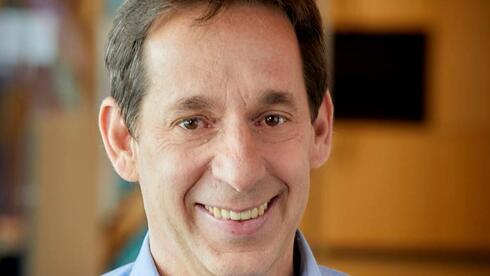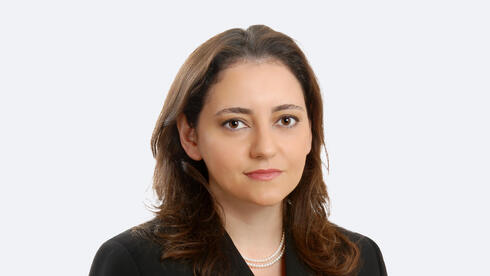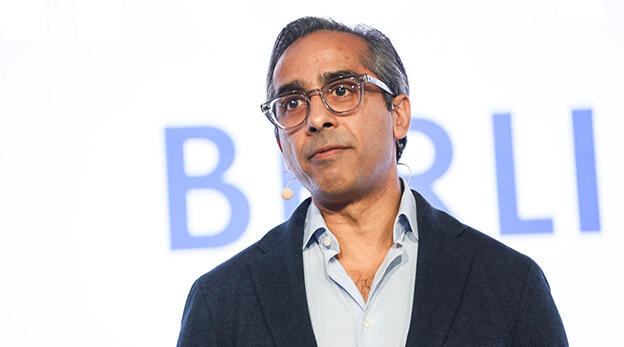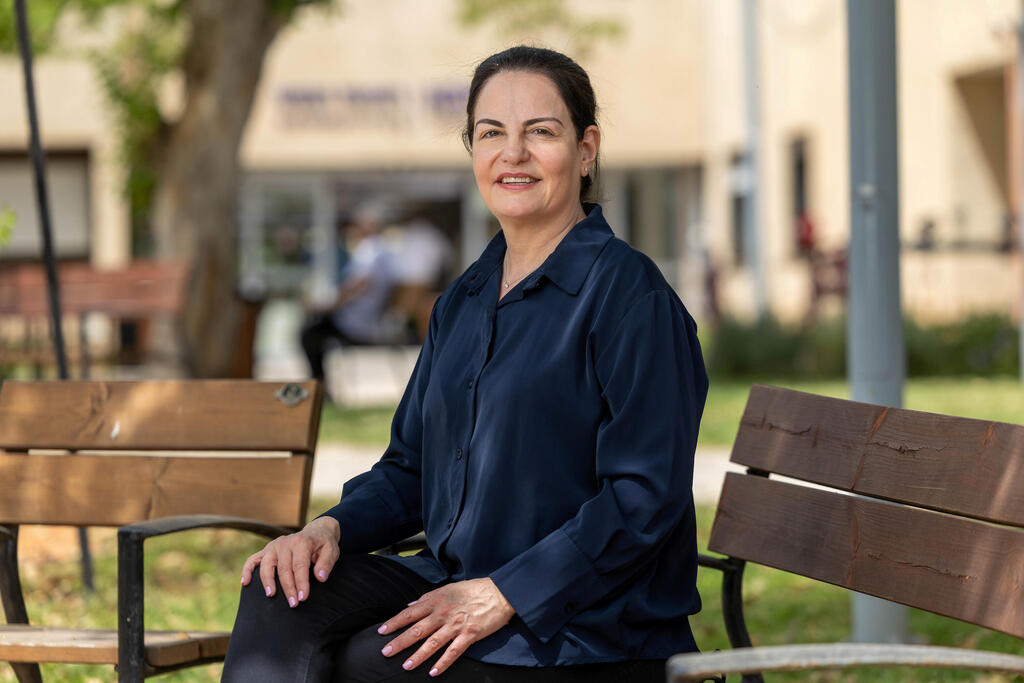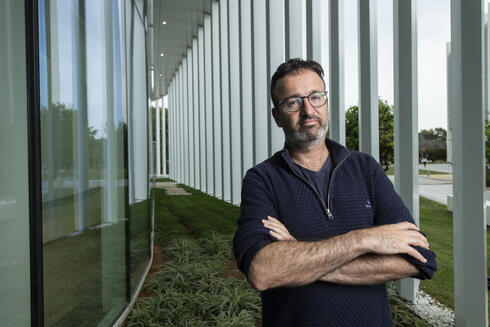
From startup exits to psychedelic therapy: Eyal Gura’s new mission
After personal loss and war, the entrepreneur is bringing high-tech efficiency to Israel’s mental health crisis
An entrepreneur with a wounded childhood
Four years ago, after selling a company for $200 million, Eyal Gura took a dive. Instead of riding high, the serial entrepreneur was overwhelmed by familiar and painful feelings from his past. Ever since his father unexpectedly abandoned the family when Gura was just eight years old—and since his younger brother died of cancer two years later—profound distress had followed him like a persistent shadow.
For years, Gura repressed those feelings, buried himself in work, and hoped that success would eventually bring peace. He occasionally attended therapy sessions. On paper, he had every reason to feel fulfilled—he completed two degrees, built and sold companies, started a family—but the cloud never lifted. And four years ago, at the age of 44, he realized he needed a different kind of healing.
"What I went through as a child is called complex trauma," Gura explains. "The mind doesn’t realize the events I experienced are unrelated, so it expects something similar to happen every year. Today, I know there’s a professional term for it, but when I was a child, there was no awareness. No one sent kids to psychologists. Then, in my twenties, when I understood I needed help and went to see a therapist, I realized he didn’t have the tools to help me."
Why not?
"Because he talks to you once a week, and by the time you return, you’re in a different headspace. Each time he asks, 'Where can I catch you today?' and you want to continue the previous conversation—but you can’t. I’m not saying therapy doesn’t work. It does—but it’s just very slow, and meanwhile, you continue to live with the pain. Every time I sold a company, I told myself I’d take time to focus on myself. But the process would bring up despair, so I’d launch a new startup just to keep my mind busy."
And what changed four years ago?
"It looked like I was about to repeat the same cycle for the fifth time, but then I read Michael Pollan’s book How to Change Your Mind and decided to try something else. That decision came from a place of despair over conventional treatments."
A book that alters consciousness
In his bestselling book, Pollan documents the psychedelic renaissance—a resurgence of research into mind-altering substances such as LSD, psilocybin (magic mushrooms), MDMA, and others, after decades of legal and cultural suppression. Once demonized, outlawed, and removed from the academic agenda, these substances are now regaining legitimacy.
Since the 1990s, and especially in the last decade, scientific studies have shown that psychedelics can offer extraordinary therapeutic benefits. A single treatment with LSD or psilocybin can suppress addictive urges for months, ease existential anxiety in terminally ill patients, and help creatives—from musicians to engineers—overcome long-standing blocks. MDMA (commonly known as ecstasy) is now being explored for its ability to alleviate PTSD.
Scientists also better understand how these substances affect the brain. A 2016 study by researchers at Imperial College London used fMRI scans to show that LSD enables normally disconnected brain regions to communicate, forming what they described as a “more integrated, unified brain.” This provides a neurological explanation for the sensation of “ego dissolution” reported by many users—a disintegration of the self that is often accompanied by feelings of unity, connection, and emotional clarity.
Michael Pollan, a respected journalist and author, ventured into this world a decade ago, including an exploration of ayahuasca—a potent plant-based brew containing DMT, one of nature’s strongest psychedelics. Users often describe ayahuasca as facilitating deep inner journeys, allowing access to previously unreachable emotions and memories. Indigenous Amazonian tribes have used the brew for generations as a spiritual tool that connects them to nature, ancestral wisdom, and healing.
A journey to Costa Rica
Gura, still in Israel at the time, read about ayahuasca and spoke with a friend who had tried it. The friend told him that one session was “more meaningful than 100 therapy sessions,” and that sealed it. Despite some fear, Gura’s exhaustion with traditional therapy led him to a treatment center in Costa Rica.
"I had never used mind-altering substances before—not even a joint," he admits. "And suddenly I was facing all the things that had been weighing on me: the brother who died, the father who left, the fear of abandonment. These were buried inside me and never processed. That’s what happens to kids or teens who go through trauma like I did—they teach themselves not to feel, because feeling is unbearable."
What happened to you there?
"You go through a week of rituals, during which your ego dissolves and you see things from the outside. It’s very hard, but also empowering. The point of the rituals is to surface your intentions—what you want to change or heal in yourself. It changed me and helped me. But ayahuasca is the most intense of all psychedelics, and in retrospect, I wouldn’t recommend starting with it. There are gentler substances."
"Post-trauma is basically the story we tell ourselves about something that happened," Gura says. "The same traumatic event can be interpreted differently by two people. One soldier might say, 'My friends died because of me'; another might say, 'I want to live fully to honor them.' Psychedelic treatments help us change the story we tell ourselves. That’s what brings relief from the symptoms of trauma."
A blinking investment opportunity
A year spent living in Costa Rica led Eyal Gura deep into the psychedelic rabbit hole. But this time, he approached not only as someone seeking personal healing — but also as someone looking to spread the word. His interest in the field became twofold: as a patient who had experienced the transformative power of these treatments, and as an entrepreneur who recognized a compelling opportunity. He experimented with MDMA treatments, which have already proven effective for treating post-traumatic stress, and began exploring the economic potential of the field.
Gura’s background isn’t in mental health or psychedelics. He holds an MBA, and his previous ventures were largely unrelated to this space. His most recent company, Zebra Medical, which was sold for $200 million, operated in the healthcare sector — connecting medical imaging to artificial intelligence — but that’s where the connection ends. PicApp and PicScout dealt with online photo technology, while The Gifts Project enabled group gift purchases. After selling these businesses, Gura focused on investing, began teaching entrepreneurship at Reichman University, and recently co-founded Wisdom, a startup that uses AI to extract and apply insights from self-help and instructional books.
As he immersed himself in the psychedelic world, Gura began seeking out ventures within the space. That’s how he discovered MSICS Pharma, a company in Ness Ziona that “grows mushrooms and received approval from the Ministry of Health for a clinical trial testing their treatment for OCD and depression,” Gura says. That, in turn, led him to MAPS — the Multidisciplinary Association for Psychedelic Studies — and its Israeli branch, led by Dr. Keren Tzarfaty and Dr. Adar Avnon.
Almost by accident — and due to very specific personal circumstances — the Israeli psychedelic movement gained a new angel investor.
And then came October 7.
A high-tech work plan
“A year after I met Keren, the war started,” Gura says. And he realized: there were suddenly many more Israelis in urgent need of help. Dr. Tzarfaty, a psychologist with a doctorate in East-West psychology and a deep background in psychedelic research, was the right person to lead such efforts. Gura brought his experience as a tech entrepreneur. “I told her we need to approach this with a high-tech mindset: build a plan and raise money so it doesn’t become a one-off effort. That’s how the clinical trial that’s part of the Healing October 7 project was born.”
At the heart of the project — which also includes an economic research component — is a pioneering clinical trial, likely the first of its kind in the world. It has already won the backing of the Ministry of Health and DDR&D, the Directorate of Defense Research & Development at the Ministry of Defense. The study aims to answer a key question: Can the success of individual psychedelic therapy sessions — typically one patient with two therapists — be replicated in a group setting?
The war has caused a sharp rise in the number of Israelis experiencing PTSD. But mental health infrastructure in Israel was already stretched thin, and therapists trained in psychedelic treatment are especially scarce. Even if the health system fully embraced this therapeutic method, only a fraction of those in need could be treated. If, however, group sessions — where two therapists guide seven, eight, or even ten patients together — prove effective, far more people could benefit.
“Israel has been through, and is still going through, collective trauma,” says Dr. Tzarfaty. “We want to test whether the group dynamic itself contributes to healing. That’s the first rationale. The second is economic — the number of people with PTSD is growing, and group therapy is more cost-effective and accessible. That’s why we want to carefully and rigorously examine the effectiveness and safety of MDMA-assisted group therapy.
“This is still a pioneering field, and we bear a great responsibility in translating powerful traditions — like shamanism, which work in specific cultural settings — into research, psychology, psychiatry, and hospitals. That transition is huge, and we’re learning how to do it in the best possible way.”
“MAPS Israel is good at clinical trials,” adds Gura, “but once you get approval, you need to start raising money.” That’s where his tech background came in: “I created a deck and started fundraising.” So far, the initiative has raised $2.5 million — from U.S.-based donors and leading figures in the Israeli tech ecosystem, many of whom know Gura personally. He cites venture capitalists Adam Fisher, Gigi Levy, and Erez Shachar among them.
The funding will support both clinical and economic research. One key question: how can this treatment be implemented at scale?
As part of the economic analysis, Gura’s team attempted — for the first time — to quantify the cost of untreated PTSD to Israeli society. “Each untreated case of PTSD costs approximately NIS 1.8 million over five years,” he says. “And the total cost to society, even in conservative estimates, is around NIS 200 billion over that same period.”
Individual therapy that already works
After raising the funds, everything moved quickly. A group of 150 Israeli therapists — all with clinical master’s degrees and specialization in trauma — have already been trained in MDMA-assisted therapy through the global MAPS program.
“It was amazing to see how much of the training involved getting therapists to unlearn what they had been taught in their degrees,” says Eyal Gura. “In psychology and psychiatry, you're taught not to hug a crying patient, even if they want a hug — you're supposed to keep talking to them. But here, they’re taught that if someone is in a five-hour session and suddenly regresses to when their father left them, it’s okay to ask if they want a hug. Therapists are used to their patients talking while they occasionally ask questions, but in these sessions, a patient might not speak for three hours. They go through deep internal experiences without saying a word. Therapists need to sit next to them, support them, and be there for them — not start probing. The training involves simulations that go against much of what they've learned.”
These therapists are now awaiting final approvals to begin work. In the meantime, Dr. Revital Amiaz, director of the psychiatric department at Sheba Medical Center, is preparing the infrastructure. She’s leading the MDMA group therapy study and explains the background with reference to previous studies on individual therapy.
“Clinical studies on MDMA for treating PTSD have been ongoing for several years,” says Amiaz. “In two studies, each with nearly 100 participants, it was found that 70% of patients no longer met the diagnostic criteria for PTSD three months after treatment. That’s astonishing. They also experienced improvement in symptoms once considered untreatable — like flashbacks and nightmares.”
Have people really stopped being post-traumatic?
“Researchers use diagnostic questionnaires to assess PTSD severity. In the individual trials, many participants’ scores dropped below the threshold for diagnosis. That’s far beyond what other psychological treatments achieve. EMDR, for instance, helps around 40% lose the diagnosis — but with MDMA, it happened in just three months, across 15 sessions, three of which were eight-hour MDMA-assisted treatments.”
And it’s not just the drug — the environment plays a critical role. Amiaz notes that even in placebo groups, where patients didn’t receive MDMA, 30% no longer met the PTSD criteria. “The setting — two therapists working closely with one patient — is powerful on its own,” she says. Now the question is how to scale this.
“What’s unique about the research we’re doing now,” she continues, “is that we’re saying: individual therapy is great, but if we want to reach more patients more quickly, we need to use group therapy.”
From ancient ritual to clinical protocol
Your model resembles age-old psilocybin or ayahuasca ceremonies, doesn’t it?
“Yes, that’s true. I’m not familiar with those exact traditions, but here’s what we plan to do: we’ll take a group of seven displaced civilians from the Gaza border area, or Nova festival survivors, or soldiers, and place them in a room with two therapists and two additional supervisors. The supervisors will monitor and assist in case anyone has a difficult experience. Altogether, we’ll be working with 169 trial participants.”
Why choose MDMA over other substances?
“Because of the research — we know it works. MDMA allows patients to connect with themselves and with others. Our study is simply a natural extension of existing individual treatment trials.”
A psychiatrist pushing boundaries
Amiaz herself is part of the psychedelic renaissance. “When I was in med school, you couldn’t even say the word MDMA — they’d tell you it ‘scratched the brain,’” she laughs.
She came to psychedelics via ketamine, an anesthetic with psychedelic properties now also used in psychiatry. “I was overseeing electroconvulsive therapy at the time, and there were reports that ketamine might help. We tried it — but it didn’t work when people were asleep. Ketamine provides something experiential. It creates insight, a sense of process — and when I gave it to people while they were awake, they reached understandings they hadn’t achieved in years of therapy. People would say things like, ‘I was a bad father — now I understand everything I did.’ It was as if they were seeing themselves from the outside.”
That led her to explore MDMA. She connected with the MAPS Israel team, including Dr. Keren Tzarfaty and Ido Siemion, and joined a study at Sheba. “There too, I saw people who made ten years’ worth of therapeutic progress in a few months. It was incredible.”
Amiaz was later trained as a therapist — and even participated in a study where therapists themselves received MDMA. “When I came back, my colleagues were waiting to see if I’d gone psychotic. My mother-in-law asked if I’d lost my mind and why I was damaging my brain. But what I experienced was powerful. I felt an instant connection to the therapists who guided me — it was like we truly knew each other. These are rapid, meaningful processes. It’s totally different from taking MDMA at a party. The focus is inward.
“That helped me understand how patients feel during treatment. I now believe that therapists can’t fully understand what a patient is going through without experiencing it themselves. We’re not required to — but it certainly helps.”
Even the establishment is on board
The Ministry of Health and Ministry of Defense — typically not known for their embrace of alternative therapies — have signed on. According to Amiaz, the process has been professional and straightforward.
“We submitted the previous studies, proved that we could manage the research financially and logistically — including importing the drug and assembling a safety committee. That convinced the Ministry of Health. It was a long process, but a good one. Now, we’re waiting on Helsinki Committee approvals at two sites: Soroka Medical Center in Be’er Sheva and Lev Hasharon Mental Health Center. We expect to begin in the coming months.”
Meanwhile, a separate, small pilot is already underway at HaEmek Hospital in Afula, where MDMA is being administered to small groups of PTSD-affected soldiers from a special unit. Early results, Amiaz says, are promising.
Her hope is that MDMA therapy will soon become a recognized, Ministry of Health–funded service in Israel. “Some people are believers, and some are not,” she says. “I’m disappointed the FDA hasn’t approved this yet — but I think it’s coming. They didn’t believe in ketamine either, and now I see it lifting people out of depression, pulling them away from suicidal thoughts, and helping them function again. That doesn’t mean you should take these substances outside a clinical setting — it can be dangerous. But when done right, it’s transformative.”
“This will be Israel’s gift to the world”
When asked what success might look like, Gura’s eyes light up. “The dream is to create a guide for this treatment model. If, say, there’s a fire in Los Angeles or an earthquake in Haiti, I’d want Israel to be able to send that playbook and teach local teams how to deploy a platform for PTSD treatment. After everything we’ve been through here, that would be our gift to the world.”




